
The Enchanting Belgian Coast: A Seaside Retreat
Discover the Belgian Coast: 67 kilometers of sandy beaches, charming towns, and cultural treasures along the scenic North Sea, perfect for a relaxing and enriching getaway.
The Belgian Coast stretches for 67 kilometers along the North Sea, offering a delightful mix of sandy beaches, charming coastal towns, and vibrant seaside resorts. Each town along the coast has its own unique charm and attractions, making it a perfect destination for all kinds of travelers. From the historic town of Ostend, known as the 'Queen of the Belgian sea-side resorts,' to the serene and family-friendly De Haan, the coast has something for everyone. One of the highlights of the Belgian Coast is its beautiful, wide, sandy beaches. These beaches are perfect for sunbathing, sandcastle building, or simply taking a relaxing stroll along the shore. The coastline is dotted with beach bars and restaurants where you can savor fresh seafood and local delicacies while enjoying the sea breeze. The coastal tram, the longest tram line in the world, offers a scenic and convenient way to explore the entire length of the coast. For those interested in history and culture, the Belgian Coast is steeped in rich heritage. Many of the coastal towns boast beautiful architecture, museums, and historic sites. Ostend, for example, is home to the Mu.ZEE art museum and the stunning St. Peter and St. Paul's Church. Blankenberge offers the Sea Life marine park and the historic Belle Epoque Center, while the town of Knokke-Heist is known for its art galleries and upscale boutiques. Nature lovers will also find plenty to enjoy along the coast. The Zwin Nature Park near Knokke-Heist is a haven for bird watchers, with its diverse bird species and scenic walking trails. The sand dunes and nature reserves scattered along the coast provide a tranquil escape from the busier tourist areas. Cycling is a popular activity, with many well-marked cycling paths offering picturesque views of the sea and countryside.
Local tips in The Belgian Coast
- Take the coastal tram to easily explore the entire coastline and discover each unique town.
- Visit during the off-season for a quieter experience and lower accommodation rates.
- Try the local seafood dishes, especially the mussels and shrimp croquettes, for an authentic taste of the region.
- Pack layers, as the weather can be unpredictable along the coast.
- Rent a bike to explore the scenic cycling paths and enjoy the natural beauty of the coastline.
The Enchanting Belgian Coast: A Seaside Retreat
The Belgian Coast stretches for 67 kilometers along the North Sea, offering a delightful mix of sandy beaches, charming coastal towns, and vibrant seaside resorts. Each town along the coast has its own unique charm and attractions, making it a perfect destination for all kinds of travelers. From the historic town of Ostend, known as the 'Queen of the Belgian sea-side resorts,' to the serene and family-friendly De Haan, the coast has something for everyone. One of the highlights of the Belgian Coast is its beautiful, wide, sandy beaches. These beaches are perfect for sunbathing, sandcastle building, or simply taking a relaxing stroll along the shore. The coastline is dotted with beach bars and restaurants where you can savor fresh seafood and local delicacies while enjoying the sea breeze. The coastal tram, the longest tram line in the world, offers a scenic and convenient way to explore the entire length of the coast. For those interested in history and culture, the Belgian Coast is steeped in rich heritage. Many of the coastal towns boast beautiful architecture, museums, and historic sites. Ostend, for example, is home to the Mu.ZEE art museum and the stunning St. Peter and St. Paul's Church. Blankenberge offers the Sea Life marine park and the historic Belle Epoque Center, while the town of Knokke-Heist is known for its art galleries and upscale boutiques. Nature lovers will also find plenty to enjoy along the coast. The Zwin Nature Park near Knokke-Heist is a haven for bird watchers, with its diverse bird species and scenic walking trails. The sand dunes and nature reserves scattered along the coast provide a tranquil escape from the busier tourist areas. Cycling is a popular activity, with many well-marked cycling paths offering picturesque views of the sea and countryside.
When is the best time to go to The Belgian Coast?
Iconic landmarks you can’t miss
Grand Place
Explore the Grand Place in Brussels, a UNESCO World Heritage site, where stunning architecture meets vibrant culture and history.
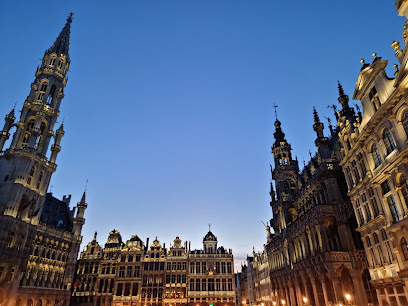
Atomium
Discover the Atomium, a striking architectural landmark in Brussels that offers breathtaking views, cultural exhibitions, and a glimpse into Belgium's vibrant history.
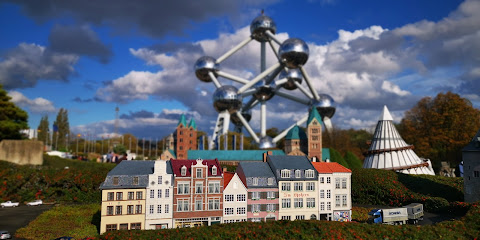
Manneken Pis
Discover the whimsical charm of Manneken Pis, the beloved fountain in Brussels that embodies the city's humor and vibrant culture.
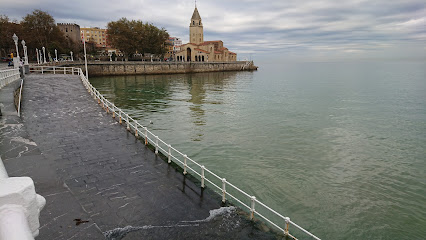
Gravensteen
Discover the enchanting Gravensteen Castle in Ghent, Belgium — a historical gem that brings the medieval past to life with stunning architecture and captivating exhibitions.
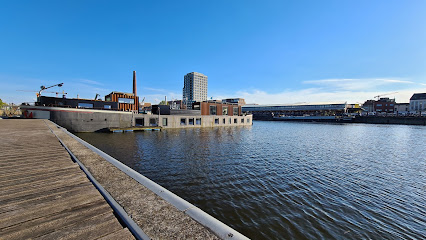
Belfry of Bruges
Discover the breathtaking views and rich history of the Belfry of Bruges, a UNESCO World Heritage Site and a must-visit landmark in Belgium.

Menin Gate
Discover the profound history and emotional resonance of Menin Gate, a war memorial in Ypres honoring the sacrifices of fallen soldiers.
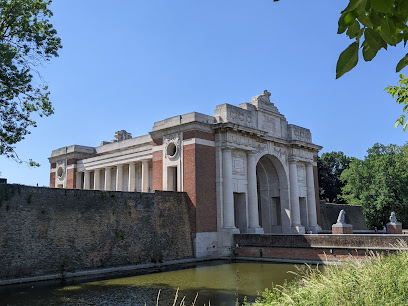
Belfry of Ghent
Explore the breathtaking Belfry of Ghent, a UNESCO World Heritage Site that showcases stunning medieval architecture and offers panoramic views of the city.

Zwin Natuur Park
Explore Zwin Natuur Park, a breathtaking nature preserve in Knokke-Heist, Belgium, featuring stunning landscapes, diverse wildlife, and engaging educational exhibits.
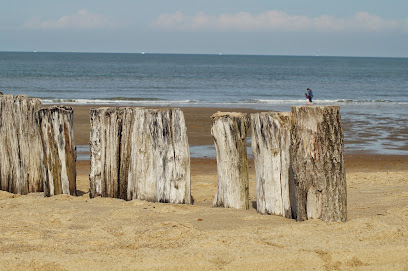
Atlantikwall Raversyde
Explore the remnants of World War II at Atlantikwall Raversyde, an open-air museum that offers a captivating insight into military history.
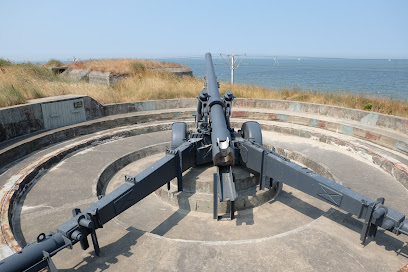
Fort Napoleon
Discover the captivating history and stunning views at Fort Napoleon, a unique heritage museum in Ostend showcasing military architecture and exhibitions.
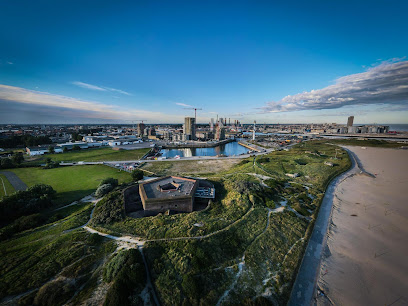
West Front Newport
Explore West Front Newport, a captivating war museum in Nieuwpoort, Belgium, showcasing the profound impact of the Great War on the local community and beyond.

Ezelpoort
Discover Ezelpoort, the historic gateway of Bruges, where medieval charm meets modern exploration in this UNESCO World Heritage Site.
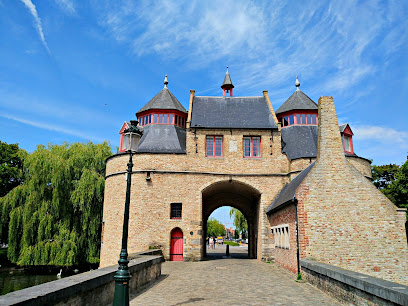
Oostende Pier
Discover the enchanting Oostende Pier, a perfect blend of relaxation, fishing, and captivating ocean views in the heart of Ostend, Belgium.
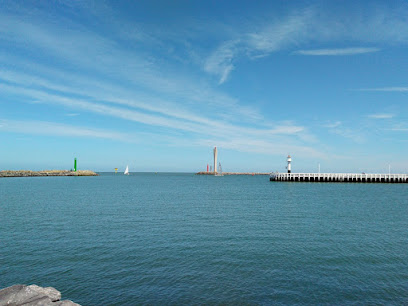
Viewpoint De Dijver
Experience breathtaking views of Bruges' canals and historic architecture at Viewpoint De Dijver, a must-visit landmark for every traveler.

Belgian Coast
Experience the scenic beauty and cultural richness of the Belgian Coast, where charming towns meet stunning sandy shores for an unforgettable getaway.
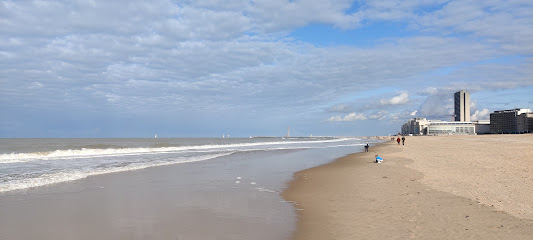
Unmissable attractions to see
De Garre
Discover De Garre, Bruges' cozy bar and café, offering an exclusive selection of local beers in a charming atmosphere.
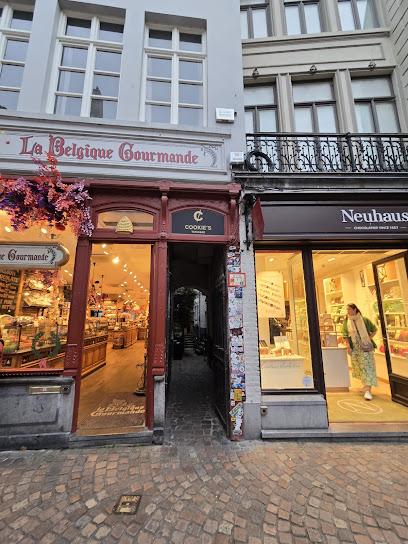
Huisje van Majutte
Explore the unique blend of maritime history and local brews at Huisje van Majutte, a must-visit attraction in Blankenberge.
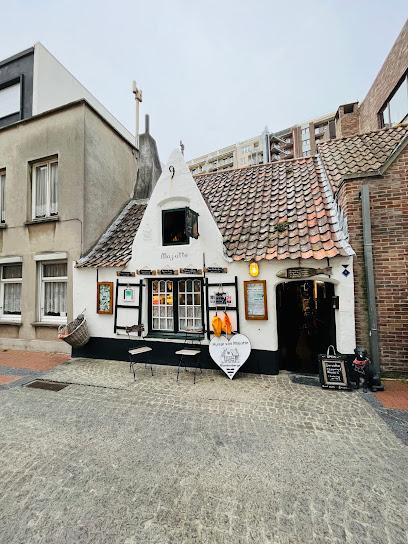
The Monk
Experience the lively ambiance of The Monk, Bruges' premier sports bar and pool hall, perfect for relaxation and socializing.
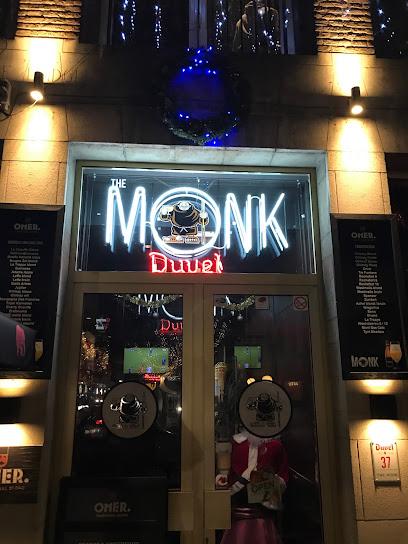
Castle Loppem
Explore Castle Loppem, a stunning historical site in Belgium, where rich heritage meets beautiful landscapes in the heart of nature.

Groot Vlaenderen
Experience the charm of Bruges at Groot Vlaenderen, where exquisite cocktails meet a cozy atmosphere for the perfect nightlife escape.
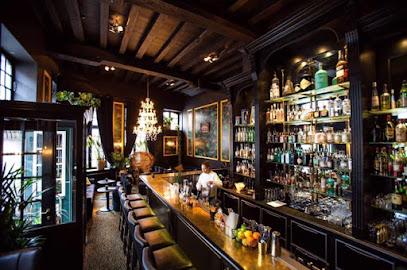
Saint-Éloi Belfry of Dunkirk
Discover the majestic Saint-Éloi Belfry of Dunkirk - a UNESCO site showcasing history, architecture, and stunning views of the coast.
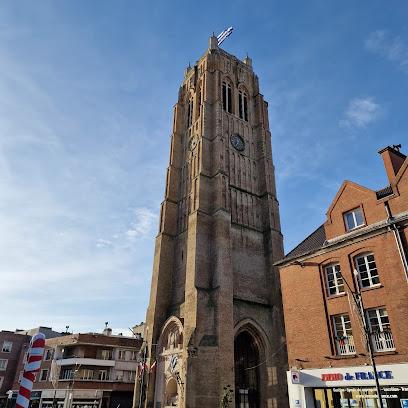
Dunkirk Tourist Office
Explore Dunkirk like a local with essential tips and insider information from the Dunkirk Tourist Office, your gateway to this charming coastal city.

Provincial Court
Explore the Provincial Court of Bruges, an architectural marvel showcasing the city's rich history and legal heritage.
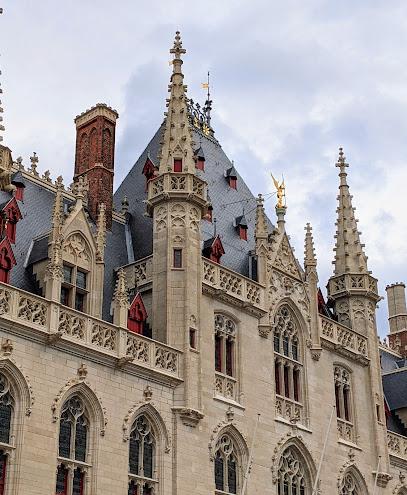
Guido Gezellemuseum
Explore the Guido Gezellemuseum in Bruges, where art and poetry intertwine, showcasing Belgium's rich cultural heritage and artistic legacy.
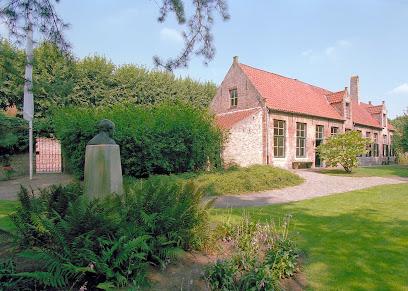
De Kuppe
Discover the cozy charm of De Kuppe in Bruges, where local flavors and a welcoming atmosphere come together for an unforgettable café experience.
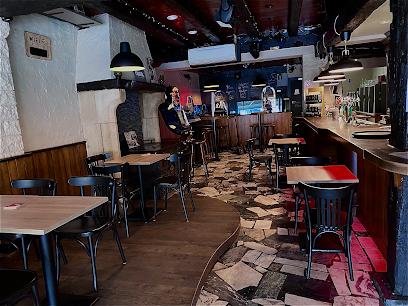
Chocolaterie de Burg
Discover the heavenly delights of Chocolaterie de Burg in Bruges, where quality chocolate craftsmanship meets historical charm.
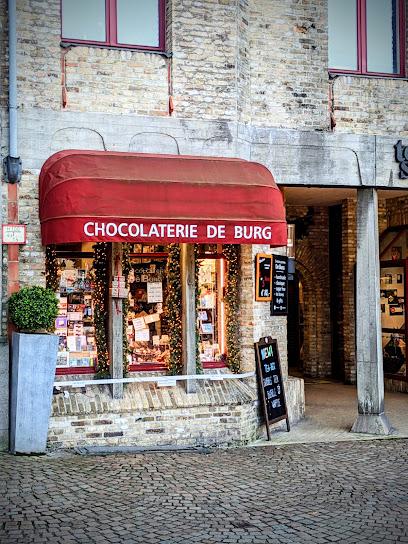
Deutscher Soldatenfriedhof Vladslo / Vladslo German War Cemetery
Explore the heartfelt remembrance at Deutscher Soldatenfriedhof Vladslo, a serene military cemetery honoring the sacrifices of World War I soldiers.
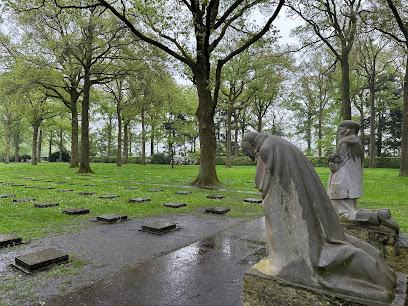
Stadsbos Oostende
Explore the serene beauty of Stadsbos Oostende, a national forest perfect for nature lovers seeking tranquility and outdoor activities.
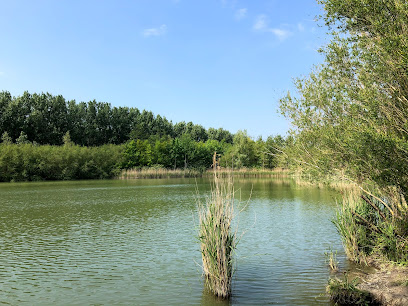
The Crystal Ship
Experience The Crystal Ship: An open-air museum where street art meets the stunning coastline of Ostend, Belgium, inviting creativity and exploration.
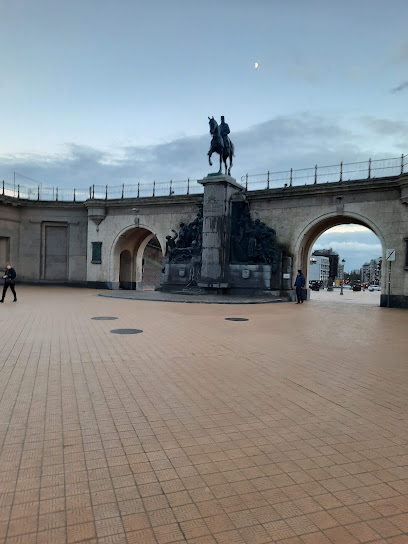
Huis Ter Beurze
Explore the historical significance of Huis Ter Beurze in Bruges, a captivating landmark that showcases the city's rich architectural heritage.
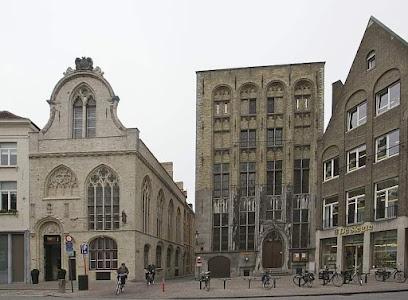
Essential places to dine
l'Apéro Ostende
Experience authentic Belgian cuisine at l'Apéro Ostende with stunning sea views and a warm atmosphere perfect for any occasion.
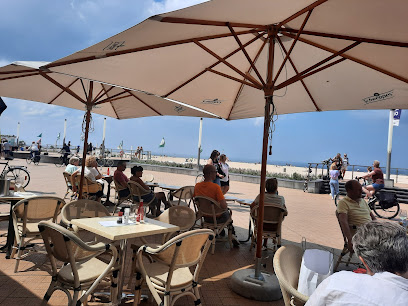
De Zeebries
Experience exquisite dining at De Zeebries in Middelkerke – where local flavors meet breathtaking seaside views.
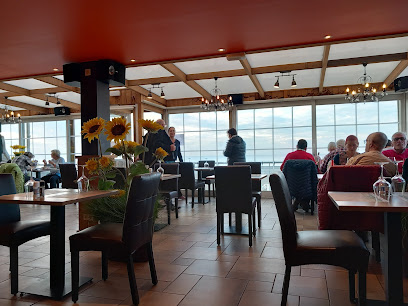
Bistro Bottarga
Experience exquisite modern French cuisine with Asian influences at Bistro Bottarga on Ostend's beautiful Albert I-promenade.
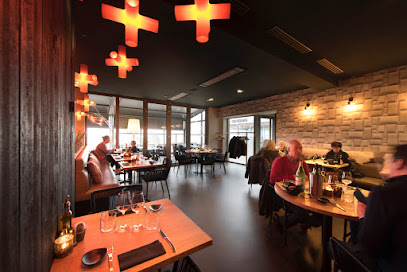
Restaurant Diplomat
Savor authentic Belgian cuisine with stunning sea views at Restaurant Diplomat in Ostend - your gateway to exquisite seafood and delightful teas.
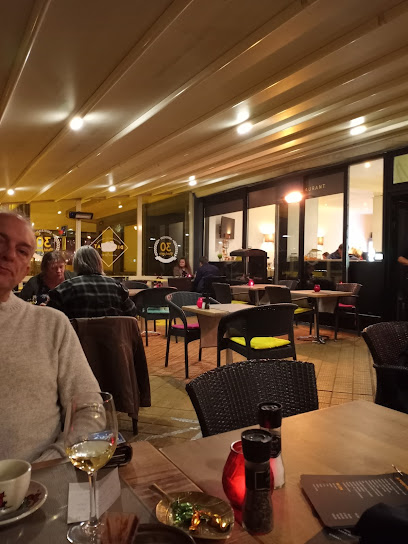
Walrave
Experience the rich flavors of local cuisine at Walrave, Ostend's charming restaurant offering fresh ingredients and inviting ambiance.
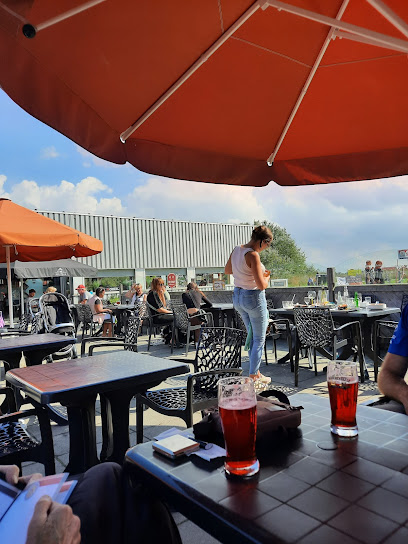
Belair Oostende
Discover the authentic taste of Belgium at Belair Oostende – where fresh ingredients meet warm hospitality in a charming setting.
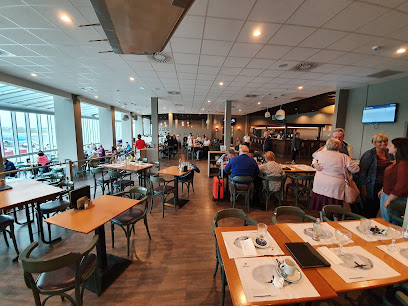
Brasserie Henry
Experience authentic Belgian cuisine at Brasserie Henry in Ostend, where local flavors meet stunning coastal views.
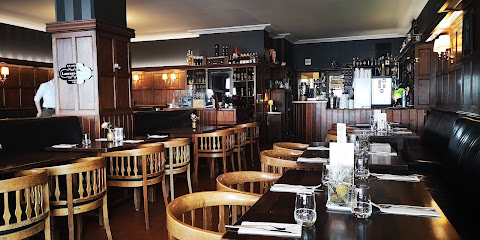
Strandhuis
Experience authentic Belgian cuisine with stunning sea views at Strandhuis in Ostend – A culinary gem on Zeedijk.
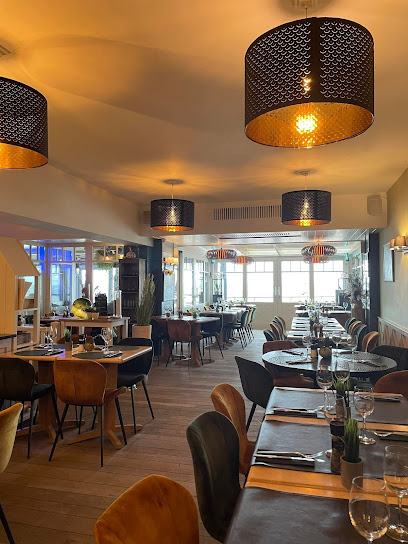
Le Basque
Experience authentic Belgian cuisine at Le Basque in Ostend - where local flavors meet warm hospitality.

Sorrento 2
Discover authentic Italian cuisine at Sorrento 2 in Ostend—where every meal is a celebration of flavor and tradition.
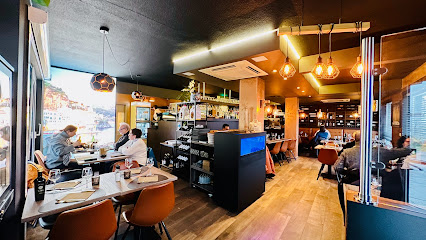
Restaurant 't Vistrapje
Experience authentic Belgian seafood at Restaurant 't Vistrapje in Ostend – where freshness meets tradition on the beautiful waterfront.
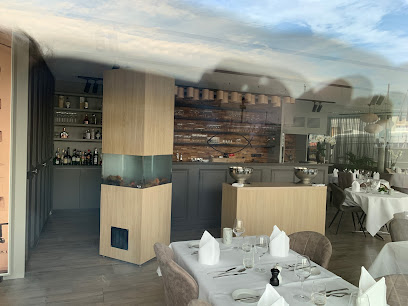
Le Chevalier
Experience the culinary delights at Le Chevalier in Ostend, where local flavors meet stunning seaside views for an unforgettable dining adventure.
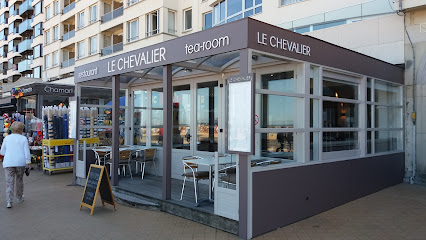
Brasserie ALBERT
Discover authentic Belgian cuisine at Brasserie ALBERT in Ostend, where local flavors meet coastal charm.
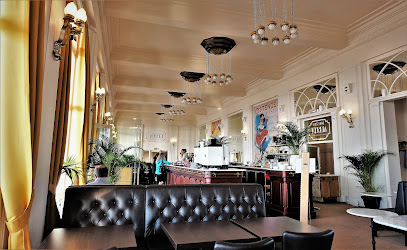
Columbus
Discover Columbus Bistro: A coastal gem offering exquisite bistro cuisine with local flair in beautiful Middelkerke.

Eethuis La Fonda
Discover the flavors of Belgium at Eethuis La Fonda in Middelkerke - where every meal is a celebration of local cuisine.
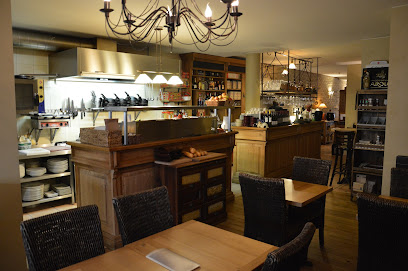
Markets, malls and hidden boutiques
Euro Shop Middelkerke
Explore Euro Shop Middelkerke for an authentic shopping experience, featuring local products and souvenirs that capture the essence of Belgian culture.
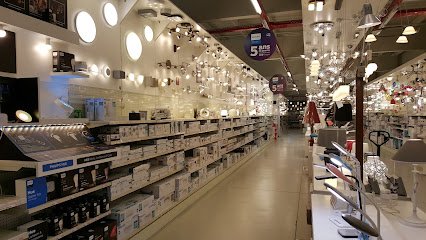
Action
Explore Action in Middelkerke – a vibrant gift shop offering everything from DIY supplies to unique home goods, perfect for tourists and locals alike.
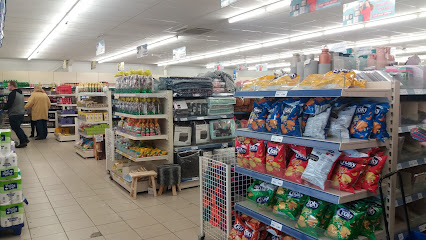
Action Oostende
Discover a treasure trove of gifts, DIY supplies, and unique home goods at Action Oostende, your go-to shopping spot in Ostend, Belgium.
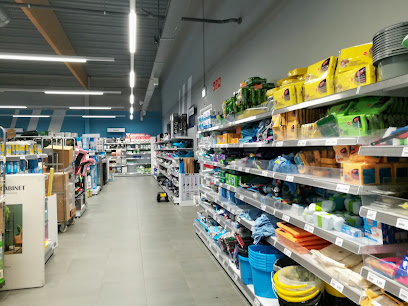
Dreamland
Discover the magic of Dreamland in Oostende, a treasure trove of gifts, books, toys, and video games for every age and interest.
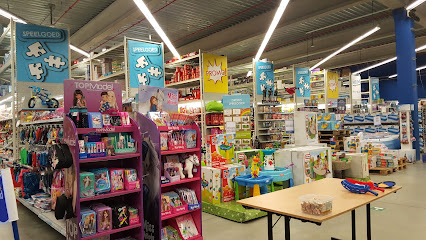
A.S.Adventure
Explore the best outdoor clothing and equipment at A.S.Adventure in Ostend, your ultimate destination for adventure gear and stylish beachwear.
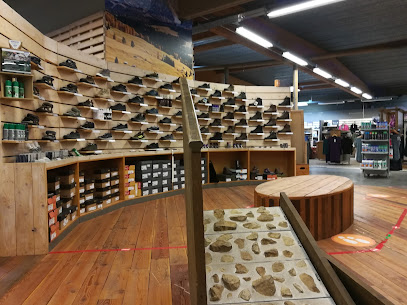
HEMA
Explore HEMA in Ostend for a unique shopping experience with a wide range of gifts, clothing, and everyday essentials.
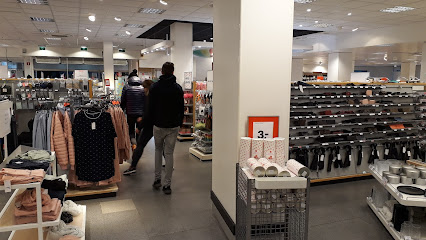
Flying Tiger Copenhagen
Explore a unique gift shop in Ostend, offering a whimsical selection of home goods, toys, and creative gifts that inspire joy.
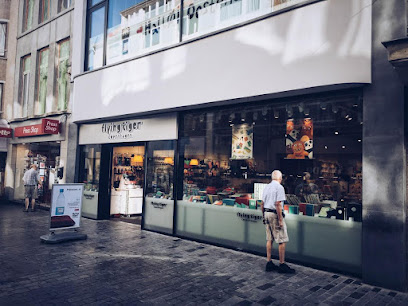
C&A
Explore C&A in Middelkerke for stylish and affordable fashion, catering to all ages and tastes with a diverse clothing collection.
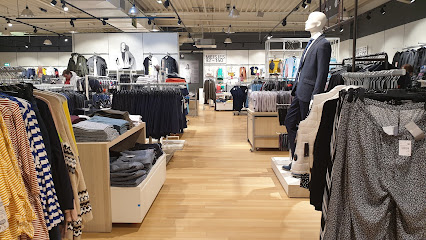
CASA Oostende AB
Explore CASA Oostende AB, your go-to gift shop in Ostend for unique home goods, stylish furniture, and delightful souvenirs.

Oxfam Tweedehands
Explore Oxfam Tweedehands in Ostend for a unique thrift shopping experience where every purchase supports a sustainable future and social justice.
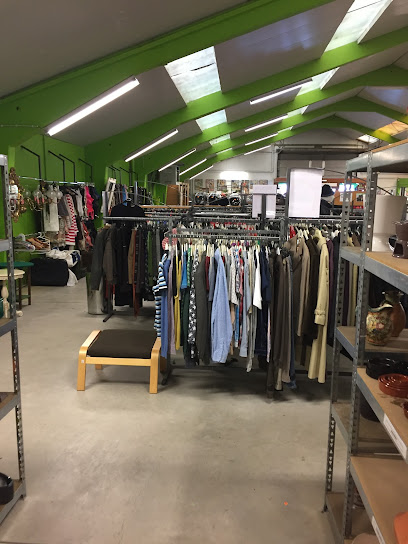
LolaLiza
Discover the latest in women's fashion at LolaLiza in Oostende, where style meets comfort and unique accessories await.
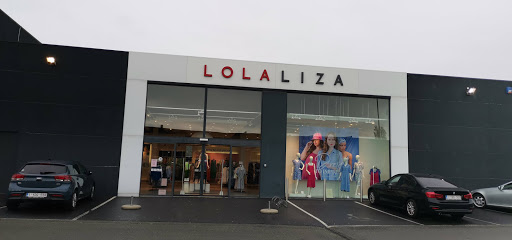
G-Star RAW Store
Discover the G-Star RAW Store in Ostend for stylish denim and fashionable apparel for men and women, committed to sustainability and quality.
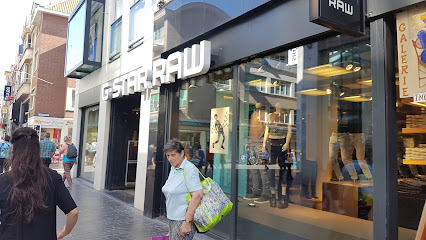
Decotuin | tuinmeubelen, interieur en tuinconstructies
Explore Decotuin in Middelkerke for exquisite outdoor furniture and décor that will elevate your outdoor space with style and comfort.

Maisons du Monde
Discover unique furniture and decor at Maisons du Monde in Ostend, where style meets creativity for your home and gifts.

Veritas - Oostende
Explore a vibrant selection of fashion accessories, hobby supplies, and children's clothing at Veritas in Oostende, where creativity meets quality.
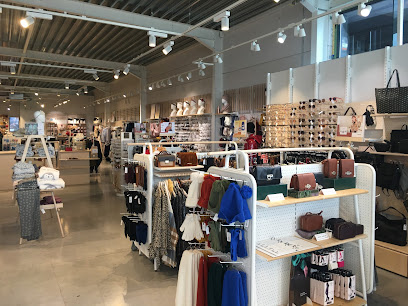
Essential bars & hidden hideouts
Lafayette Music Bar
Experience the vibrant nightlife of Ostend at Lafayette Music Bar, where live music and great drinks create unforgettable moments.
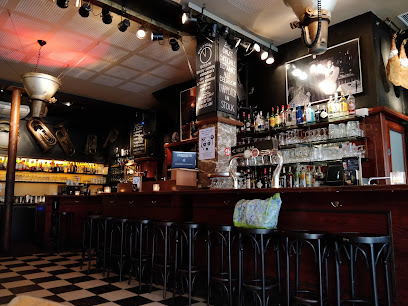
Blue Buddha Beach - Oostende
Experience the vibrant atmosphere of Blue Buddha Beach, Oostende - the perfect blend of relaxation and lively beach bar culture.
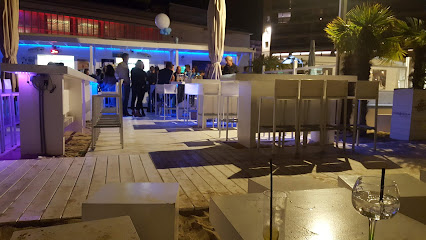
Manuscript
Experience the lively atmosphere and unique drink selection at Manuscript Bar, the heart of Oostende's vibrant nightlife.
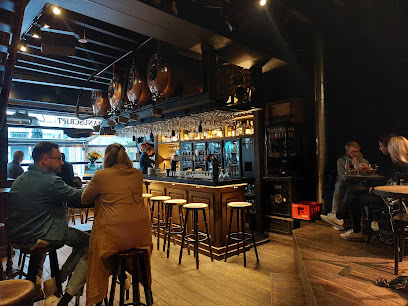
Pata Pata Beachbar
Experience the laid-back charm of Pata Pata Beachbar in Middelkerke, where sun, sea, and delicious drinks come together for a perfect getaway.
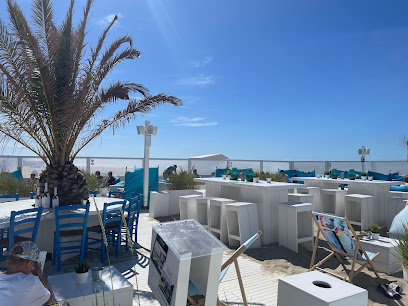
Tiki Beach
Discover Tiki Beach, a vibrant bar in Middelkerke offering tropical cocktails and a relaxed beachside experience.

Bondi Beach Bar Oostende (Pop Up Bar)
Experience the vibrant beach vibes at Bondi Beach Bar in Oostende, where refreshing drinks and stunning views await you.

Baranquilla
Experience the vibrant nightlife at Baranquilla, a cozy pub in Middelkerke serving local beers, cocktails, and unforgettable moments.
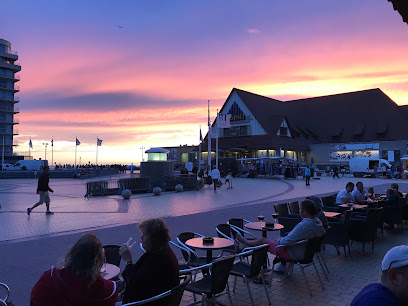
Barbaar
Experience the best of cocktails, gourmet burgers, and tapas at Barbaar in Middelkerke, the perfect spot for relaxation and socializing.
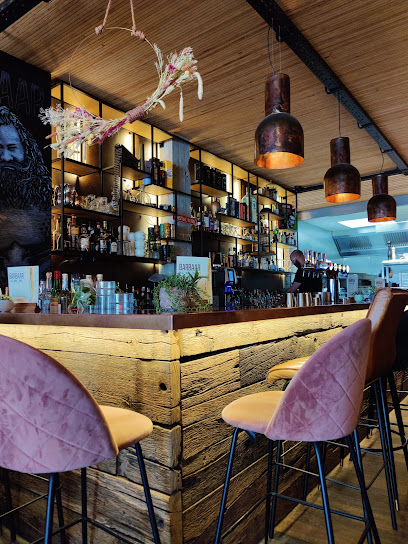
Hemingway
Dive into the vibrant nightlife of Ostend at Hemingway Bar, where cocktails flow and live music creates an unforgettable atmosphere.
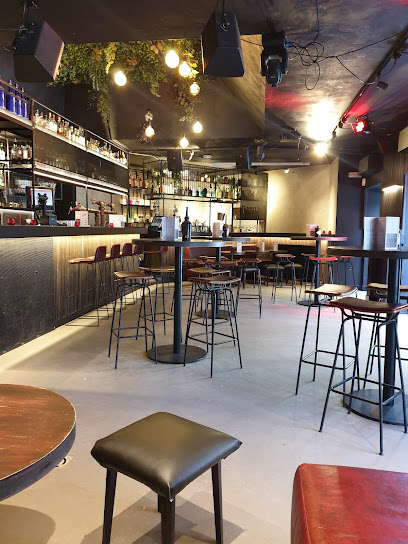
Muchacha
Experience the vibrant coastal charm of Muchacha, a beach bar in Middelkerke offering refreshing drinks, delicious food, and stunning ocean views.

Victor's Boutique Bar
Experience the charm of Victor's Boutique Bar in Ostend, where exquisite cocktails and a cozy atmosphere await every visitor.

Rhumerie Louis
Experience the vibrant nightlife of Ostend at Rhumerie Louis, a cozy cocktail bar specializing in exquisite rum-based drinks for every palate.
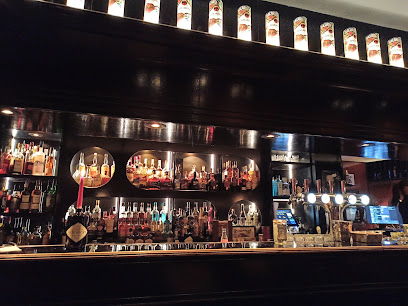
Brazza cocktailbar
Experience the vibrant nightlife of Ostend at Brazza Cocktailbar with expertly crafted cocktails in a stylish setting.
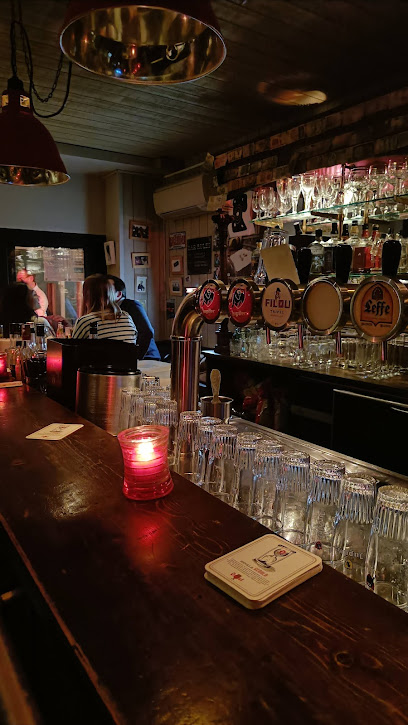
Copador
Experience the vibrant atmosphere of Copador, a premier bar in Ostend, offering a diverse drink selection and a welcoming ambiance for all.
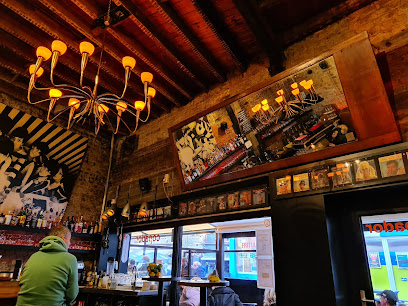
zanzibar
Discover Zanzibar in Middelkerke, a vibrant bar offering delightful drinks and stunning sea views in a lively atmosphere perfect for relaxation.

Local Phrases about The Belgian Coast
-
- HelloHallo
[ha-lo] - GoodbyeTot ziens
[tot zeens] - YesJa
[ya] - NoNee
[nee] - Please/You're welcomeAlstublieft
[al-stu-bleeft] - Thank youDank u
[dank oo] - Excuse me/SorrySorry
[so-ree] - How are you?Hoe gaat het?
[hoo gaat het] - Fine. And you?Goed. En met jou?
[khoot. en met yo] - Do you speak English?Spreekt u Engels?
[spraykt oo engels] - I don't understandIk begrijp het niet
[ik buh-greip hut neet]
- HelloHallo
-
- I'd like to see the menu, pleaseMag ik de menukaart zien, alstublieft
[ma-kh ik de me-nu-khart zeen, al-stu-bleeft] - I don't eat meatIk eet geen vlees
[ik ayt khayn vleys] - Cheers!Proost!
[prohst] - I would like to pay, pleaseIk wil graag betalen, alstublieft
[ik vil khraakh buh-ta-len, al-stu-bleeft]
- I'd like to see the menu, pleaseMag ik de menukaart zien, alstublieft
-
- Help!Help!
[help] - Go away!Ga weg!
[ga vekh] - Call the Police!Bel de politie!
[bel de po-lee-see] - Call a doctor!Bel een dokter!
[bel ayn dok-ter] - I'm lostIk ben verdwaald
[ik ben fur-dwaald] - I'm illIk ben ziek
[ik ben zyek]
- Help!Help!
-
- I'd like to buy...Ik wil graag kopen...
[ik vil khraakh koh-pen] - I'm just lookingIk kijk alleen maar
[ik khayk al-ayn maar] - How much is it?Hoeveel kost het?
[hoo-vel kost hut] - That's too expensiveDat is te duur
[dat is tuh dur] - Can you lower the price?Kunt u de prijs verlagen?
[kunt oo de preys fur-lah-khen]
- I'd like to buy...Ik wil graag kopen...
-
- What time is it?Hoe laat is het?
[hoo laht is hut] - It's one o'clockHet is een uur
[het is ayn oor] - Half past (10)Half elf
[half elf] - MorningOchtend
[okh-tend] - AfternoonMiddag
[mid-dakh] - EveningAvond
[ah-vont] - YesterdayGisteren
[khis-ter-en] - TodayVandaag
[fahn-dakh] - TomorrowMorgen
[mor-khen] - 1Een
[ayn] - 2Twee
[twey] - 3Drie
[dree] - 4Vier
[veer] - 5Vijf
[vayf] - 6Zes
[zehs] - 7Zeven
[zay-ven] - 8Acht
[akht] - 9Negen
[nay-khen] - 10Tien
[teen]
- What time is it?Hoe laat is het?
-
- Where's a/the...?Waar is een/de...?
[var is ayn/de] - What's the address?Wat is het adres?
[vat is hut a-dres] - Can you show me (on the map)?Kunt u mij de weg wijzen (op de kaart)?
[kunt oo may de vekh vay-zen (op de kart)] - When's the next (bus)?Wanneer is de volgende (bus)?
[ven-er is de vol-hen-duh (bus)] - A ticket (to ....)Een kaartje (naar ....)
[ayn kart-ye (nar)]
- Where's a/the...?Waar is een/de...?
History of The Belgian Coast
-
In the Middle Ages, the Belgian Coast witnessed the rise of Bruges as an important commercial hub. Its strategic location along the coast and its network of canals made it a critical point for trade between northern Europe and the Mediterranean. The city's prosperity peaked in the 12th to 15th centuries, turning it into one of the wealthiest cities in Europe.
-
The Battle of Nieuwpoort, fought on July 2, 1600, was a significant event during the Eighty Years' War between the Dutch Republic and the Spanish Empire. The battle took place near the coastal town of Nieuwpoort and marked a crucial victory for the Dutch forces under Maurice of Nassau, Prince of Orange.
-
The 18th century brought new intellectual and cultural movements to the Belgian Coast. Ostend, in particular, became a focal point for trade and colonial ventures, especially with the establishment of the Ostend Company in 1722 which engaged in trade with the Far East. The coastline saw the construction of new fortifications and infrastructure to support its growing economic activities.
-
During World War I, the Belgian Coast was a strategic front. The town of Nieuwpoort and the surrounding areas were part of the Western Front, witnessing extensive trench warfare and military operations. The flooding of the Yser River by Belgian forces was a defensive measure that played a crucial role in halting the German advance.
-
In World War II, the Belgian Coast became a part of the Atlantic Wall, a vast system of coastal fortifications built by Nazi Germany to defend against Allied invasions. Numerous bunkers, gun emplacements, and other defensive structures were constructed along the coast, remnants of which can still be seen today.
-
After World War II, the Belgian Coast underwent significant reconstruction and development. The mid-20th century saw a tourism boom, transforming coastal towns like Knokke-Heist, Blankenberge, and De Panne into popular holiday destinations. Modern infrastructure, hotels, and recreational facilities were built, reshaping the coastline into a vibrant tourist hub.
-
The Belgian Coast is rich in cultural heritage, reflected in its numerous museums, art galleries, and historical sites. The coastal towns host various festivals celebrating local traditions, maritime culture, and arts, such as the annual Sand Sculpture Festival in Ostend and the Zoute Grand Prix in Knokke-Heist, attracting visitors from around the world.
The Belgian Coast Essentials
-
The Belgian Coast is easily accessible from various international destinations. The closest major airport is Brussels Airport (BRU), approximately 120 kilometers away from the coast. From Brussels, you can take a direct train to coastal cities such as Ostend, Blankenberge, and Knokke-Heist. The train journey typically takes around 1.5 to 2 hours. Alternatively, you can rent a car and drive to the coast, enjoying the scenic route along the way.
-
Public transportation along the Belgian Coast is well-organized and efficient. The Kusttram (Coast Tram) is a popular option, running from De Panne near the French border to Knokke-Heist near the Dutch border, covering a distance of 67 kilometers. Buses and local trains also connect coastal towns. Taxis are available, but booking in advance is recommended. Renting a bicycle is another excellent way to explore the coast, with numerous bike paths and rental shops available.
-
The official currency in Belgium is the Euro (EUR). Credit and debit cards are widely accepted in hotels, restaurants, and shops. ATMs are readily available in all major coastal towns. It is advisable to carry some cash for smaller establishments and markets that might not accept cards. Contactless payments are also common and widely accepted.
-
The Belgian Coast is generally a safe destination for tourists. However, it is advisable to stay vigilant and take standard precautions. Avoid leaving your belongings unattended on the beach and be cautious in crowded areas, especially during peak tourist seasons. There are no specific high-crime areas targeting tourists, but it is always best to stay aware of your surroundings and avoid poorly lit areas at night.
-
In case of emergency, dial 112, the emergency number for police, fire, and medical assistance in Belgium. Most coastal towns have local police stations and medical facilities. It is recommended to have travel insurance that covers medical emergencies. Pharmacies are available in all major towns, where you can purchase over-the-counter medications. In case of minor health issues, pharmacists can often provide advice and assistance.
-
Fashion: Do dress comfortably and appropriately for the beach. Swimwear is acceptable on the beach but cover up when leaving the beach area. Religion: Do respect local customs when visiting religious sites, such as churches. Public Transport: Do validate your ticket before boarding the Coast Tram or bus. Don't eat or drink on public transport. Greetings: Do greet people with a polite 'bonjour' (French) or 'goedendag' (Dutch). A handshake is also common. Eating & Drinking: Do try local delicacies such as moules-frites (mussels and fries) and Belgian waffles. Don't rush meals; dining is often a leisurely activity.
-
To experience the Belgian Coast like a local, visit the weekly markets where you can find fresh seafood, local produce, and artisanal goods. Engage with locals at beach bars and cafes, where they are often willing to share recommendations and stories. Don't miss the chance to explore the dunes and nature reserves, such as the Zwin Nature Park. For a unique experience, take a guided fishing trip or a sailing excursion along the coast.
Nearby Cities to The Belgian Coast
-
Things To Do in Ostend
-
Things To Do in Nieuwpoort
-
Things To Do in De Haan
-
Things To Do in Blankenberge
-
Things To Do in Bruges
-
Things To Do in Zeebrugge
-
Things To Do in Knokke-Heist
-
Things To Do in Ypres
-
Things To Do in Kortrijk
-
Things To Do in Ghent
-
Things To Do in Lille
-
Things To Do in Tournai
-
Things To Do in Aalst
-
Things To Do in Antwerp
-
Things To Do in Brussels













